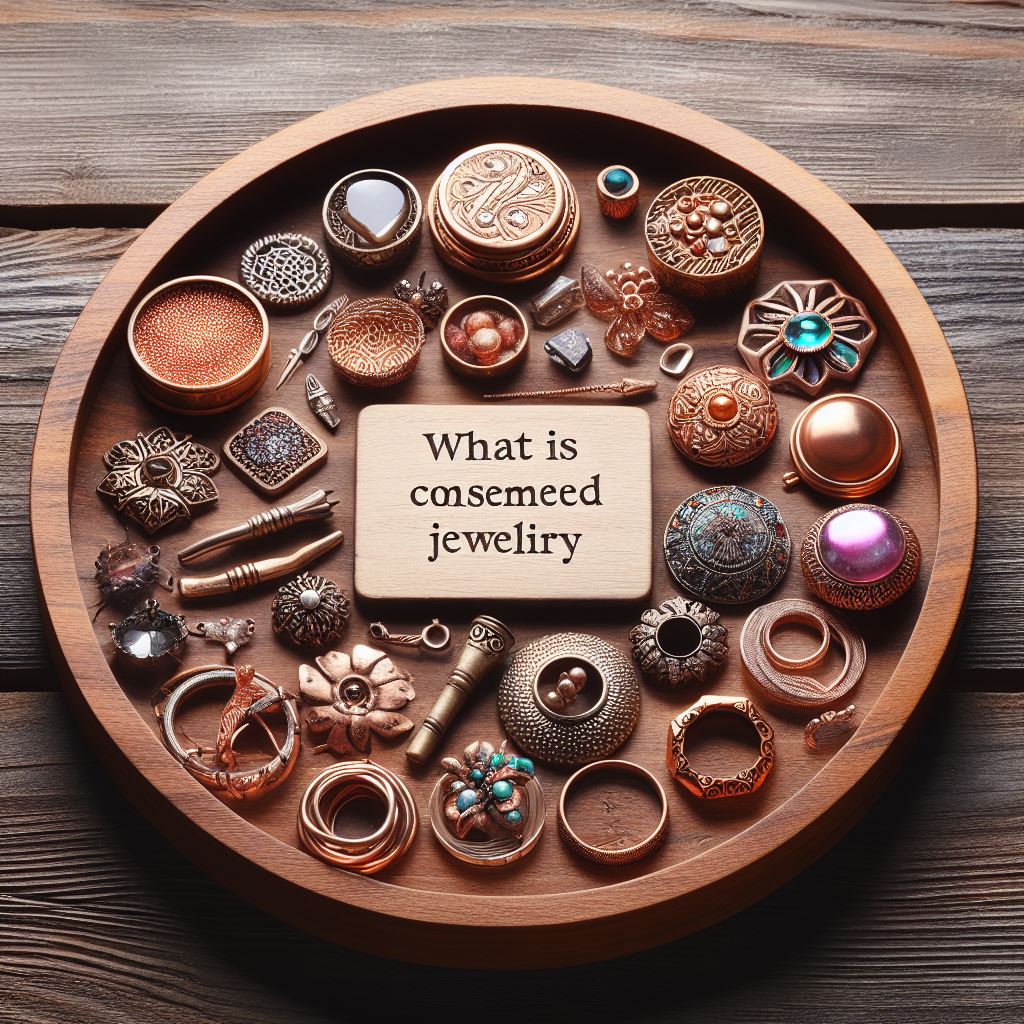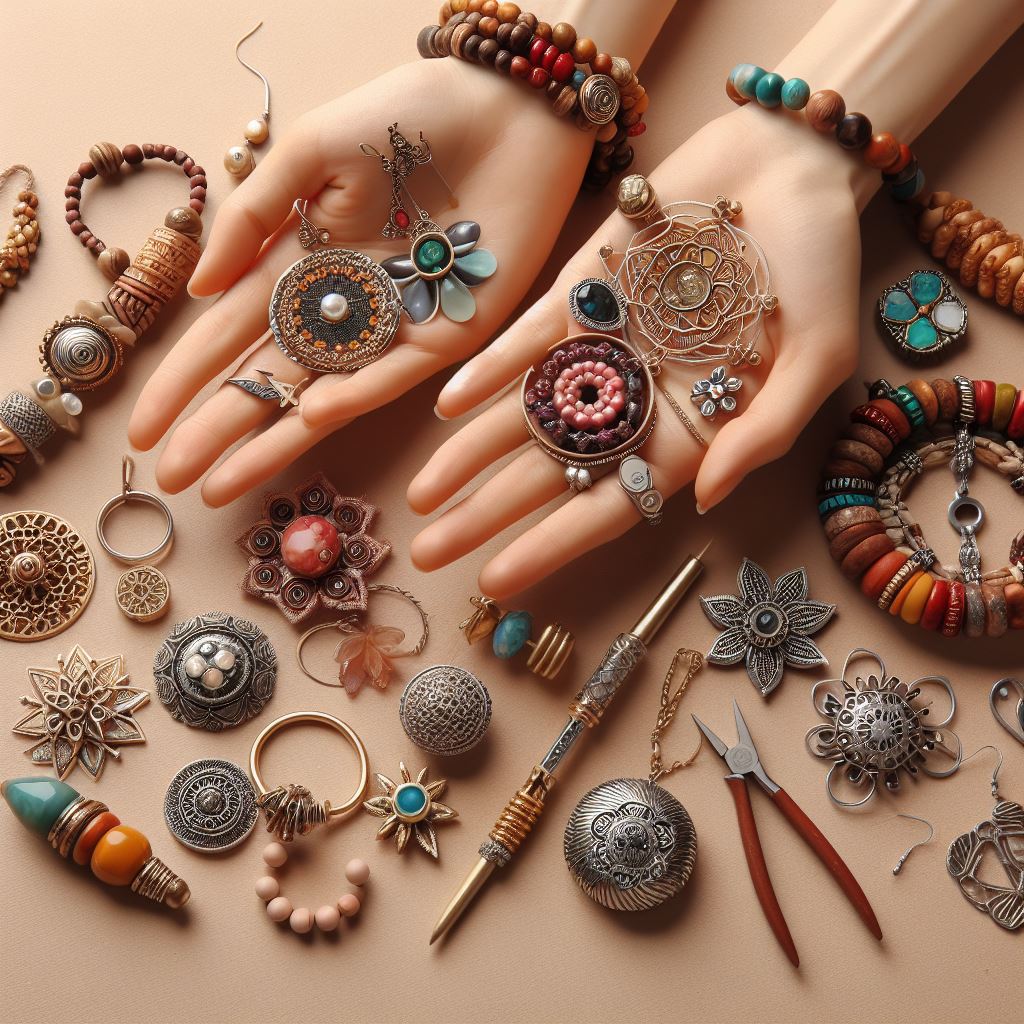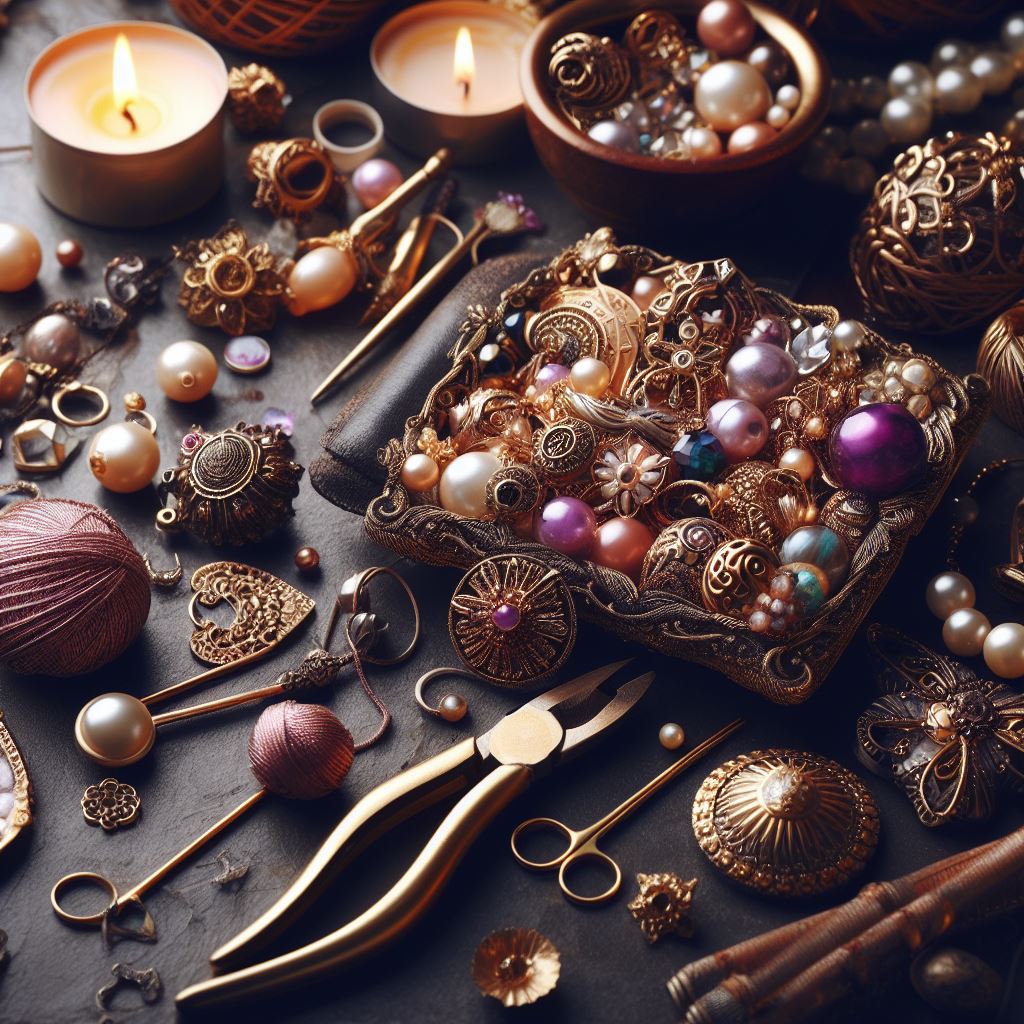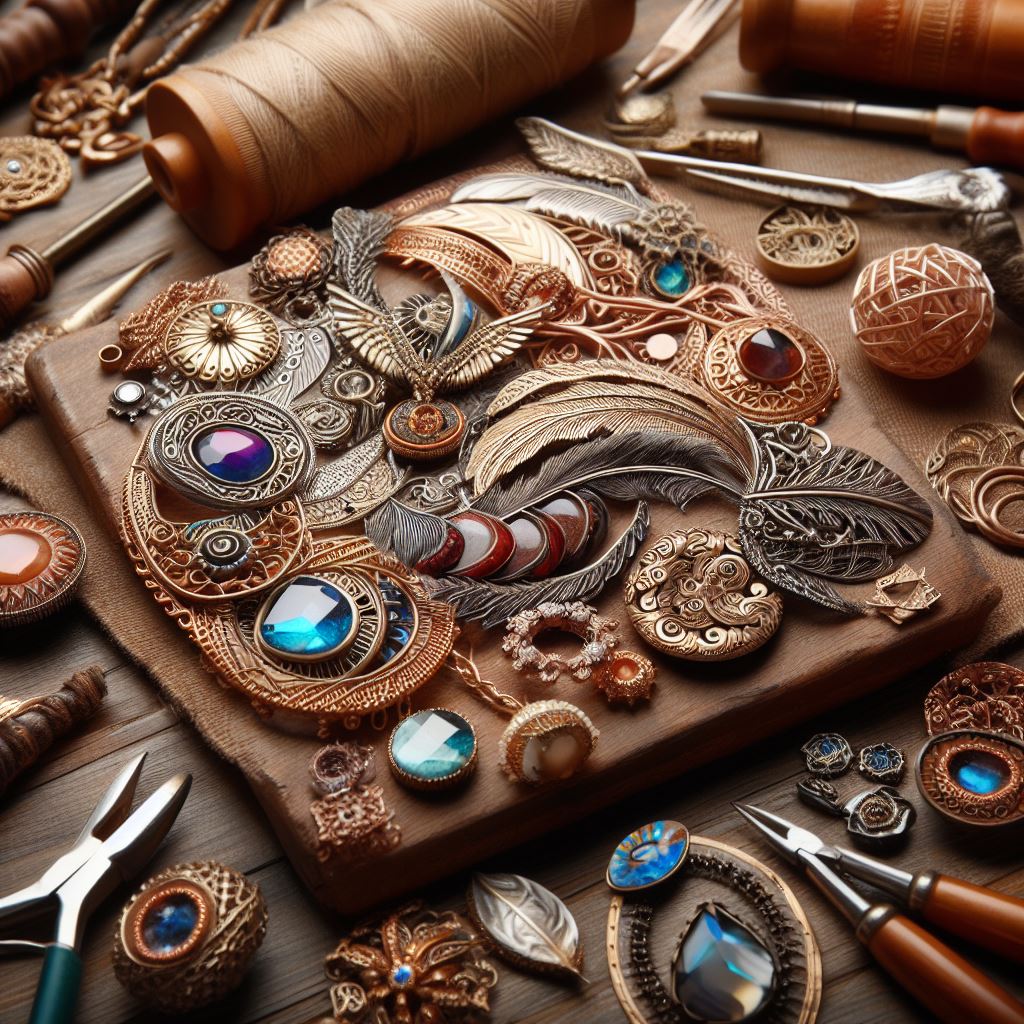
In the world of jewelry, there exists a category that embodies the ingenuity and craftsmanship of artisans – handmade jewelry. But what exactly falls under this designation? Handmade jewelry encompasses pieces created entirely by hand, avoiding the use of machinery or mass production techniques. From delicate necklaces meticulously woven with beads to intricate rings intricately crafted with metals, this unique genre of jewelry showcases the skill and passion of its creators. Join us as we explore the captivating world of handmade jewelry and unravel the artistry behind each exquisite piece.

Definition of Handmade Jewelry
Handmade jewelry refers to jewelry pieces that are crafted and created by artisans using traditional craftsmanship techniques. Unlike mass-produced jewelry, Handmade jewelry is made in small quantities and each piece is carefully crafted with a personal touch and attention to detail. This type of jewelry showcases the skill and creativity of the maker, resulting in unique and one-of-a-kind pieces of wearable art.
Traditional Craftsmanship
Handmade jewelry is characterized by the use of traditional craftsmanship techniques that have been passed down through generations. These techniques require specialized skills and knowledge acquired through years of practice and experience. Artisans who create handmade jewelry often use age-old methods such as metalworking, beading, wire-wrapping, enameling, and glassblowing.
Limited Use of Machinery
Unlike mass-produced jewelry, handmade jewelry is created with limited use of machinery. While tools such as pliers, torches, and hammers may be utilized, the majority of the work is done by hand. This allows for a greater level of control and precision, ensuring that each piece is unique and reflects the artisan’s individual style and craftsmanship.
Personal Touch and Attention to Detail
One of the defining characteristics of handmade jewelry is the personal touch and attention to detail. Artisans take great pride in their work and give careful consideration to every aspect of the piece they create. From selecting the materials to incorporating intricate designs, each step is executed with precision and love. The result is a piece of jewelry that exudes a sense of artistry and beauty.
Types of Handmade Jewelry
Handmade jewelry encompasses a wide range of styles and techniques. Here are some of the most popular types of handmade jewelry:
Metalworking
Metalworking is a versatile technique used to create handmade jewelry. Whether it’s shaping and soldering precious metals like gold and silver, or working with base metals like copper and brass, metalworking allows artisans to create unique and intricate pieces. Techniques such as forging, texturing, and casting are often employed to add depth and dimension to the designs.
Beading
Beaded jewelry involves the use of beads, both natural and synthetic, to create stunning and intricate designs. Artisans can use a variety of bead types, including glass, gemstone, and seed beads, to add texture and color to their creations. Beaded jewelry can range from delicate and dainty designs to bold and statement-making pieces.
Wire-wrapping
Wire-wrapping is a technique where thin metal wires are wrapped around gemstones, beads, or other elements to create intricate designs. This technique allows artisans to create beautiful pendants, rings, and earrings with a distinct and organic style. Wire-wrapping can be used with various types of wire, including sterling silver, gold-filled, and copper.
Enameling
Enameling is a process that involves fusing powdered glass onto metal through a high-temperature firing process. Artisans use a torch or kiln to melt the powdered glass onto surfaces such as copper or sterling silver, resulting in colorful and vibrant designs. Enameling allows for endless possibilities in creating unique patterns and textures.
Glassblowing
Glassblowing is a traditional technique that involves shaping molten glass through blowing air into a tube or pipe. Artisans skilled in glassblowing can create intricate glass beads, pendants, and other jewelry components. This technique allows for a wide range of colors, shapes, and textures, making each handmade glass piece truly unique.
Materials Used in Handmade Jewelry
Handmade jewelry can be created using a variety of materials. Here are some common materials used by artisans:
Precious Metals
Precious metals such as gold, silver, and platinum are often used in handmade jewelry. These metals not only have intrinsic value but also offer durability and versatility. Artisans may use various techniques to work with precious metals, including soldering, casting, and texturing, to create stunning jewelry pieces.
Gemstones
Gemstones play a significant role in handmade jewelry, adding color, brilliance, and sparkle to the designs. Artisans carefully select and incorporate gemstones into their creations, considering their cut, clarity, and color. From precious gemstones like diamonds, rubies, and sapphires to semi-precious stones like amethyst and turquoise, the possibilities for gemstone jewelry are endless.
Glass Beads
Glass beads are a popular choice among artisans for creating unique and colorful jewelry pieces. These beads come in a variety of shapes, sizes, and colors, allowing for endless creative possibilities. Whether hand-blown, lampworked, or molded, glass beads add a touch of vibrancy and elegance to handmade jewelry.
Natural Materials
Artisans often incorporate natural materials such as wood, bone, shells, and feathers into their handmade jewelry. These materials bring a sense of organic beauty and texture to the designs, creating a connection with nature. From statement necklaces made of carved wood to earrings adorned with natural gemstone slices, jewelry made with natural materials truly has a unique charm.
Mixed Media
Handmade jewelry can also be created using mixed media, combining different materials to create truly original and unique pieces. Artisans may experiment with combining metals, gemstones, beads, fabric, and even found objects to create jewelry that transcends traditional boundaries. Mixed media jewelry offers endless opportunities for creativity and self-expression.
Common Techniques in Handmade Jewelry
Handmade jewelry involves the use of various techniques to bring designs to life. Here are some common techniques used by artisans:
Soldering
Soldering is a technique used to join metal components together using a soldering torch or iron. By applying heat to the solder, it turns into a molten state and binds the metal parts together. This technique allows artisans to create secure and durable connections, making it ideal for creating complex and intricate designs.
Cold Connections
Cold connections refer to techniques that join metal components without the use of heat. This includes methods such as riveting, wire wrapping, and using mechanical fasteners. Cold connections preserve the integrity of delicate materials like gemstones and can add an interesting design element to the jewelry piece.
Bead Stringing
Bead stringing is a technique that involves threading beads onto a string, wire, or cord to create a necklace, bracelet, or other jewelry pieces. It requires precision and attention to detail to create a balanced and visually pleasing arrangement of beads. Bead stringing allows for endless possibilities in terms of bead types, sizes, and colors, making it a versatile technique in handmade jewelry.
Wirework
Wirework involves manipulating and shaping wire to create various jewelry components such as clasps, pendants, and earring hooks. By bending, twisting, and wrapping wire, artisans can achieve intricate and decorative designs. Wirework offers a great deal of freedom and creativity, allowing artisans to explore different shapes and patterns in their handmade jewelry.
Metal Stamping
Metal stamping is a technique that involves using metal stamps to create designs on metal surfaces. Artisans use a hammer or mallet to strike the metal stamp, leaving an impression or design on the surface. This technique allows for customization and personalization, as artisans can stamp names, dates, or meaningful phrases onto their jewelry pieces.

Characteristics of Handmade Jewelry
Handmade jewelry possesses distinct characteristics that set it apart from mass-produced jewelry. Here are some key characteristics of handmade jewelry:
Unique and One-of-a-Kind
Handmade jewelry is inherently unique, as each piece is individually crafted by artisans. No two pieces are exactly alike, allowing the wearer to own a truly one-of-a-kind piece of jewelry. This uniqueness adds a sense of exclusivity and individuality to handmade jewelry.
Imperfections and Flaws
Unlike mass-produced jewelry, handmade jewelry may exhibit imperfections and flaws. These imperfections are often considered part of the charm and beauty of the piece, showcasing the handcrafted nature of the jewelry. Imperfections add character and authenticity to handmade jewelry, making each piece truly special.
Artistic Expression
Handmade jewelry is a form of artistic expression, allowing artisans to showcase their creativity and craftsmanship. Artisans infuse their designs with their personal style and vision, resulting in pieces that reflect their artistic sensibilities. Handmade jewelry allows for the exploration of unique design elements, making each piece a wearable work of art.
Customization and Personalization
Handmade jewelry offers opportunities for customization and personalization. Artisans can work closely with customers to create custom pieces that reflect their preferences and personal style. Whether it’s incorporating birthstones, initials, or special symbols, handmade jewelry can be tailored to tell a personalized story.
Limited Production
Handmade jewelry is typically produced in limited quantities. This limited production ensures that each piece is created with care and attention to detail. It also adds to the exclusivity and value of handmade jewelry, as wearers can be confident that they are wearing a unique piece that is not mass-produced.
Artisans and Craftsmen in Handmade Jewelry
Handmade jewelry is created by skilled artisans and craftsmen who dedicate their time and expertise to their craft. Here are some key figures in the world of handmade jewelry:
Master Jewelers
Master jewelers are highly skilled artisans who have honed their craft through years of practice and experience. They possess a deep understanding of design concepts, materials, and techniques, and are capable of creating exquisite and intricate jewelry pieces. Master jewelers often pass down their knowledge and skills to apprentices, ensuring the preservation of traditional techniques.
Independent Artists
Independent artists in the world of handmade jewelry often work solo, creating their own designs and managing their businesses. They are driven by their passion for creating unique pieces and expressing their artistic vision. Independent artists often utilize a wide range of techniques and materials to create jewelry that reflects their individual style and creativity.
Artisanal Collectives
Artisanal collectives are groups of skilled artisans who come together to collaborate and showcase their talents. These groups provide a supportive community for artisans, allowing them to share ideas, techniques, and resources. Artisanal collectives often organize exhibitions and events, providing opportunities for artisans to showcase and sell their handmade jewelry.
Ethical and Fair Trade Practices
Many artisans and craftsmen in the handmade jewelry industry adhere to ethical and fair trade practices. They prioritize sustainable sourcing of materials, ensuring that gemstones and metals are acquired responsibly. Additionally, they may employ fair labor practices, providing fair wages and safe working conditions for their employees.
Preserving Traditional Techniques
Artisans in the handmade jewelry industry play a crucial role in preserving traditional techniques that have been passed down through generations. They strive to keep traditional craftsmanship alive, often incorporating these techniques into their modern designs. By preserving these techniques, artisans ensure that the cultural heritage and artistry associated with handmade jewelry are upheld.

Distinguishing Handmade from Mass-Produced Jewelry
It is important to distinguish handmade jewelry from mass-produced jewelry. Here are some factors that set handmade jewelry apart:
Price and Value
Handmade jewelry often carries a higher price compared to mass-produced jewelry due to the craftsmanship involved and the uniqueness of each piece. The value of handmade jewelry lies not only in its materials but also in the skill, creativity, and time put into its creation.
Design Originality
Handmade jewelry offers design originality that is often lacking in mass-produced jewelry. Artisans have the freedom to create unique and innovative designs that are not bound by market trends or commercial considerations. This allows for a broader range of styles and aesthetics in handmade jewelry.
Quality and Attention to Detail
Handmade jewelry is known for its exceptional quality and attention to detail. Artisans take pride in creating jewelry that is well-crafted and durable. Each piece is meticulously made and carefully inspected to ensure that it meets the artisan’s high standards. The attention to detail is evident in the finishing, symmetry, and overall aesthetics of handmade jewelry.
Story and Artistic Vision
Handmade jewelry often carries a story and artistic vision behind its creation. Artisans infuse their personal experiences, inspirations, and cultural influences into their designs. Wearers of handmade jewelry can connect with the story and artistic vision behind each piece, creating a deeper and more meaningful connection.
Supporting Artisans and Small Businesses
When purchasing handmade jewelry, individuals have the opportunity to support artisans and small businesses directly. Buying handmade jewelry helps sustain the livelihoods of artisans, enabling them to continue their craft and contribute to the creative economy. It also fosters a sense of community and appreciation for the skill and artistry involved in handmade jewelry.
The Popularity and Appeal of Handmade Jewelry
Handmade jewelry holds a unique appeal that has contributed to its growing popularity. Here are some reasons why handmade jewelry is highly sought after:
Unique and Unconventional
Handmade jewelry offers a departure from mass-produced, cookie-cutter designs. Each piece is unique and unconventional, allowing wearers to express their individuality and personal style. Handmade jewelry provides an opportunity to stand out from the crowd and make a fashion statement that reflects one’s personality.
Personal Connection and Meaning
Handmade jewelry often holds special meaning and sentimental value. Whether it’s a custom-designed piece or a jewelry item that incorporates birthstones or symbols with personal significance, handmade jewelry has the power to evoke emotions and create a personal connection between the wearer and the piece.
Supporting Artistic Craftsmanship
Choosing handmade jewelry means supporting the work of skilled artisans and craftsmen. By purchasing handmade jewelry, individuals contribute to the preservation of traditional techniques and the livelihoods of independent artists. This support fosters a sense of appreciation for the time, skill, and passion that goes into the creation of each piece.
Eco-friendly and Sustainable
Handmade jewelry often prioritizes eco-friendly and sustainable practices. Artisans may use recycled metals, ethically sourced gemstones, and natural materials in their creations. By opting for handmade jewelry, individuals can align their fashion choices with their values of sustainability and environmental responsibility.
Community and Ethical Considerations
Purchasing handmade jewelry fosters a sense of community and ethical considerations. Many artisans actively engage with their customers, offering personalized customer service and fostering a connection between the maker and the wearer. Additionally, supporting artisans and small businesses through the purchase of handmade jewelry promotes fair trade practices and supports the local economy.
Places to Find and Buy Handmade Jewelry
Handmade jewelry can be found and purchased in various locations. Here are some common places to explore:
Artisan Markets and Craft Fairs
Artisan markets and craft fairs are excellent opportunities to discover a wide range of handmade jewelry. These events often bring together talented artisans from the local community, providing a platform for them to showcase and sell their creations. Visiting artisan markets and craft fairs allows individuals to interact directly with the artisans, learn about their techniques, and find unique pieces.
Boutiques and Art Galleries
Boutiques and art galleries specializing in handmade jewelry offer curated selections of unique and one-of-a-kind pieces. These establishments often highlight the work of local and independent artists, providing a space for their creations to be showcased and appreciated. Shopping at boutiques and art galleries allows individuals to support both artists and small businesses while discovering exceptional handmade jewelry.
Online Handmade Marketplaces
Online handmade marketplaces, such as Etsy and Artfire, provide a vast variety of handmade jewelry options. These platforms connect artisans with customers from around the world, offering convenience and accessibility. Online handmade marketplaces typically feature reviews and ratings, allowing buyers to make informed decisions, and often provide direct communication channels with the artisans.
Custom Orders and Commissions
Many artisans accept custom orders and commissions, allowing individuals to collaborate directly with the maker to create a personalized piece of jewelry. This process often involves consultations and discussions to bring the customer’s vision to life. Custom orders and commissions provide a unique opportunity to own a truly bespoke piece of handmade jewelry.
Directly from Independent Artists
Some independent artists sell their handmade jewelry directly through their own websites or social media platforms. This direct purchasing method allows individuals to support the artist directly and establish a personal connection with the maker. Following independent artists on social media platforms can also provide insights into their creative process and upcoming jewelry releases.

Caring for Handmade Jewelry
Proper care and maintenance are essential for preserving the beauty and longevity of handmade jewelry. Here are some tips for caring for your handmade jewelry:
Proper Cleaning and Maintenance
Regular cleaning is important to remove dirt, oils, and residues that can accumulate on your handmade jewelry. Use a mild soap or jewelry cleaner and a soft brush to gently clean the surface of the jewelry. Rinse with lukewarm water and pat dry with a soft cloth. Avoid using harsh chemicals or abrasive substances that can damage the jewelry.
Avoiding Exposure to Harsh Chemicals
Handmade jewelry should be protected from exposure to harsh chemicals, such as household cleaners, cosmetics, and perfumes. These chemicals can tarnish metals, dull gemstones, and damage delicate finishes. It is advisable to remove your handmade jewelry before engaging in activities that involve contact with chemicals.
Storage and Preservation Tips
Proper storage is important to prevent damage and maintain the quality of handmade jewelry. Keep your jewelry in a clean and dry place, away from direct sunlight and extreme temperatures. Consider storing individual pieces in soft pouches or jewelry boxes to prevent scratching and tangling.
Repair and Restoration Services
If your handmade jewelry requires repair or restoration, it is best to consult an experienced jeweler or the original artisan. They will be able to assess the extent of the damage and offer appropriate repair solutions. It is crucial to address any issues promptly to prevent further damage and ensure the longevity of your handmade jewelry.
Supporting Longevity and Durability
To ensure the longevity and durability of your handmade jewelry, consider some preventative measures. Remove your jewelry before engaging in physical activities, such as sports or household chores, to minimize the risk of damage. Avoid exposing your jewelry to excessive moisture, heat, or harsh impacts.
By following these care tips, you can enjoy your handmade jewelry for years to come and maintain its beauty and quality.
In conclusion, handmade jewelry is a testament to the artistry, creativity, and craftsmanship of skilled artisans. It offers unique and one-of-a-kind pieces that exude a personal touch and attention to detail. Handmade jewelry allows for customization and personalization, creating a deeper connection between the wearer and the piece. By supporting artisans and small businesses, individuals contribute to the preservation of traditional techniques and promote ethical practices. With its unique appeal and meaningful stories, handmade jewelry continues to captivate individuals seeking a truly special and artistic expression of style.


